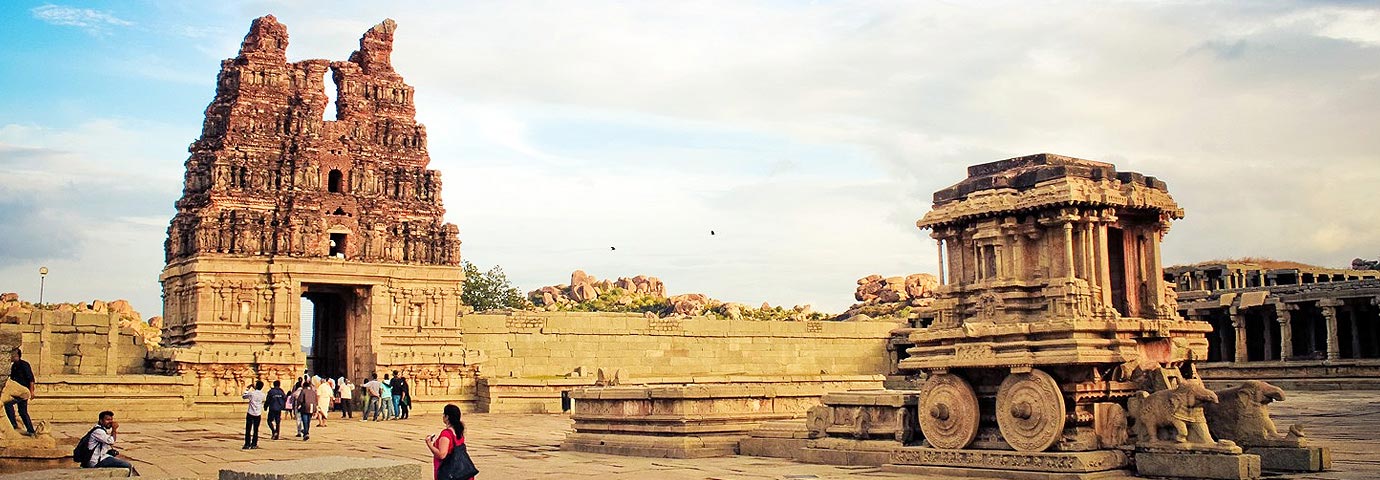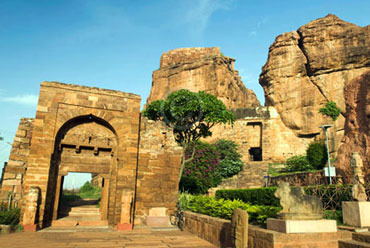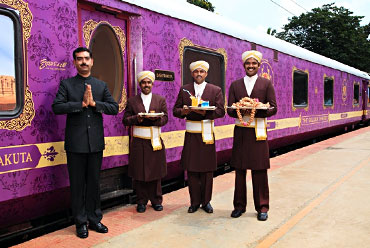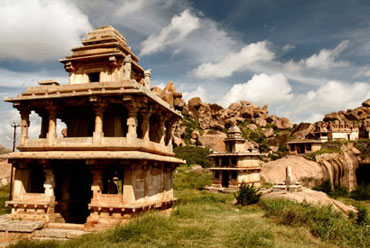Hampi is located in the south Indian state of Karnataka. The Group of Monuments at Hampi is the biggest allure of the city. Declared as an UNESCO World Heritage Site since 1986 the 26 sq. km. area is covered in ruins dating back to the 14th century. The glorious remnants of the bygone era has drawn travelers from all over the globe. The architecture of the monuments reflects the zenith of their incredible skills. The Tungabhadra near the vicinity blesses with amazing natural beauty.
History
Hampi has its name mentioned as Kishkinda in the epic Ramayana. The kingdom belonged to Bali and Sugriva. Bali was killed by Lord Rama. Sugriva wholeheartedly supported Lord Rama to get back his wife, Devi Sita from the Demon King Ravana from Lanka. Historical accounts verify that Hampi was the capital city of the powerful Vijayanagar Empire in South India. Under the rule of Krishna Deva Raya (1509-30) the empire was prosperous. Enriched by the cotton and the spice trade it was one of the most beautiful cities of the time. Its palaces and Dravidian temples were much admired by travelers, be it Arab (Abdul Razaak), Portuguese (Domingo Paes) or Italian (Nicolò dei Conti). Conquered by the Deccan Muslim alliance of 5 Kings in 1565, the city was looted over a period of six months before being abandoned.
What to See
The Group of Monuments at Hampi have earned the status of UNESCO World heritage site because of their spectacular architecture. Witness the medley of Hindu religion art, architecture in an unmatched scale. Temples of Hampi are noted for their large dimensions, ornate adornment, bold and delicate carvings, stately pillars, magnificent pavilions, iconographic and traditional depictions, which include subjects from the Ramayana and the Mahabharata.
The Vitthala temple is an excellent specimen. The colossal statues of Lakshmi, Narasimha and Ganesha are noted for their massiveness and grace. The Krishna temple, Pattabhirama temple, Hazara Ramachandra and Chandrasekhara temple as also the Jain temples are other examples.
Among non-religious structures, the Zenana enclosure wherein a massive stone basement of the Queen's palace and ornate pavilion called 'Lotus-Mahal' are the only remnants of a luxurious 'Antahpura'. The Dhananayaka's enclosure (treasury), the Mahanavami Dibba carrying beautifully sculptured panels, a variety of ponds and tanks, the elephant's stables and the row of pillared Mandapas are some of the important architectural remains of Hampi.
Recent excavations have brought to light a large number of palatial complexes. Interesting finds include a large number of stone images, beautiful terracotta objects and stucco figures that once beautified the royal palaces and temples. In addition, many gold and copper coins, household utensils, a square stepped-tank (Sarovar) and a large number of ceramics, including the important variety of porcelain and inscribed Buddhist sculptures of 2nd-3rd century A.D. have also been unearthed.
How to Reach
By Air: The nearby domestic airport is at Bellary which is located about 60 km from Hampi. The closest international airport is at Bengaluru which is at 350 km distance. Cabs, taxis, KSRTC buses commute to the site of the World heritage monuments.
By Rail: Hospet is the nearest railway station, 13 kilometers away. The railhead is located on important rails crisscrossing the country. From the railhead, the site of the world heritage monuments can be reached by taxis, buses and cabs.
By Road: Hampi is well connected by road to important cities. KSRTC buses link the world heritage site to numerous places. Private cabs, AC buses, normal buses, etc all connect to the city.





